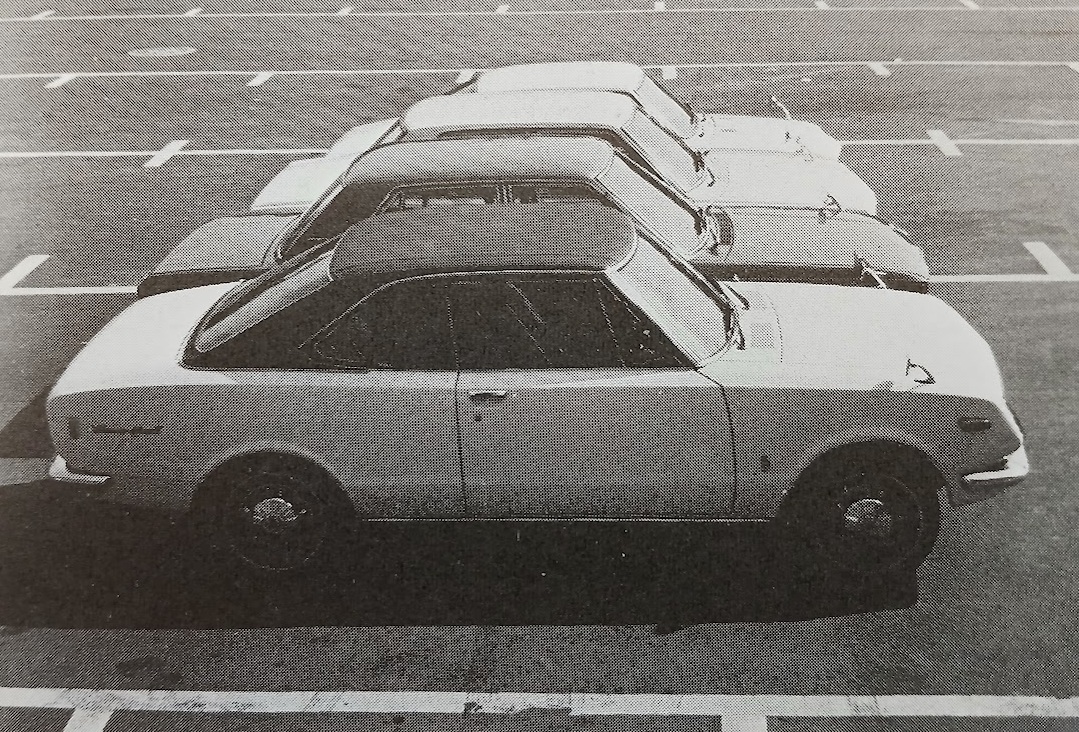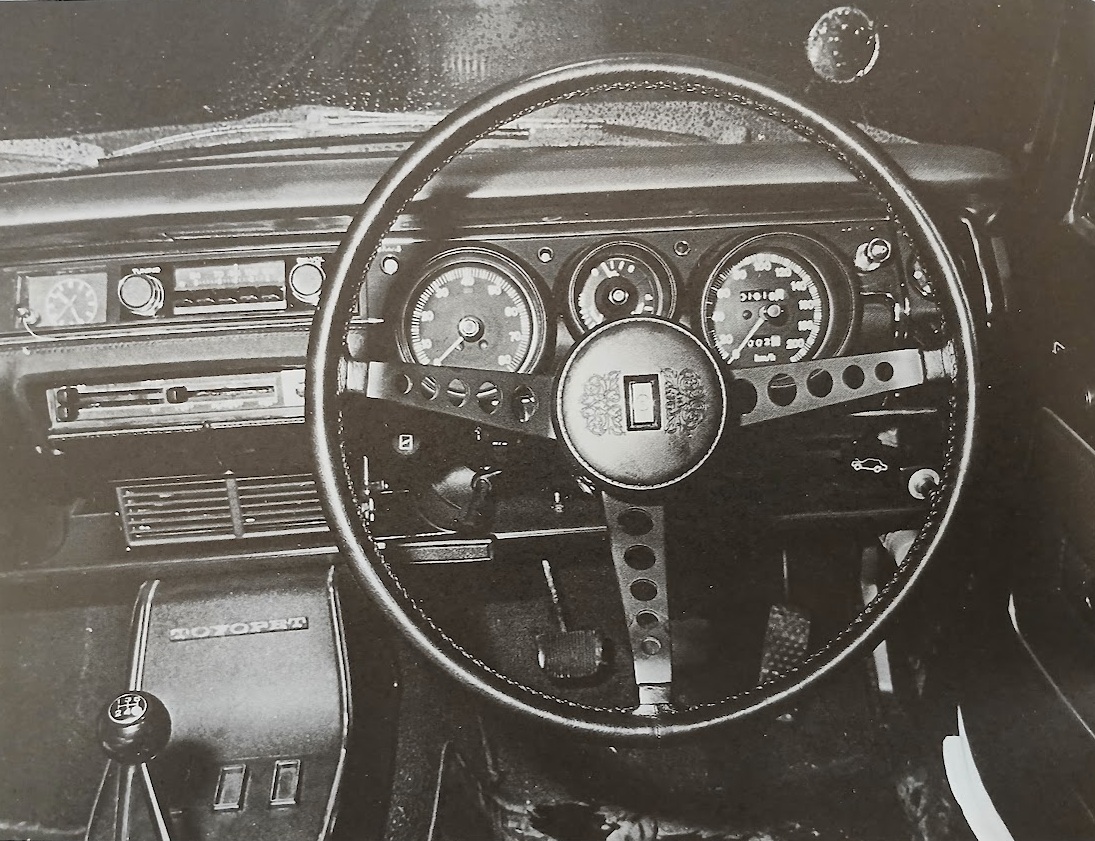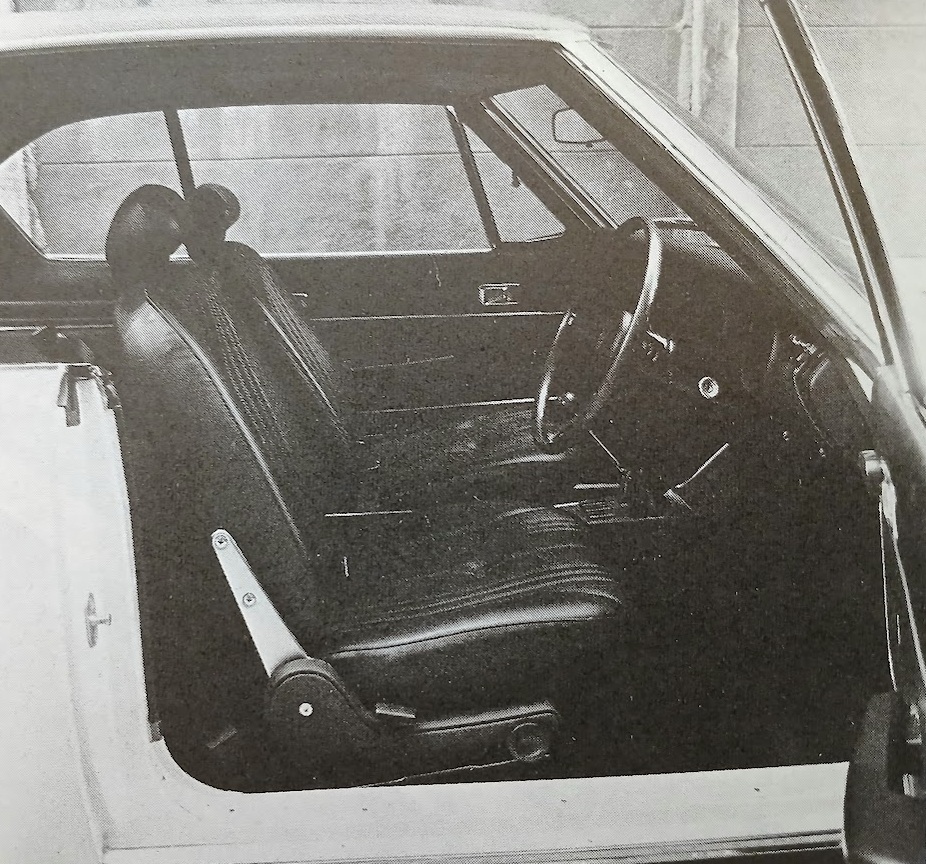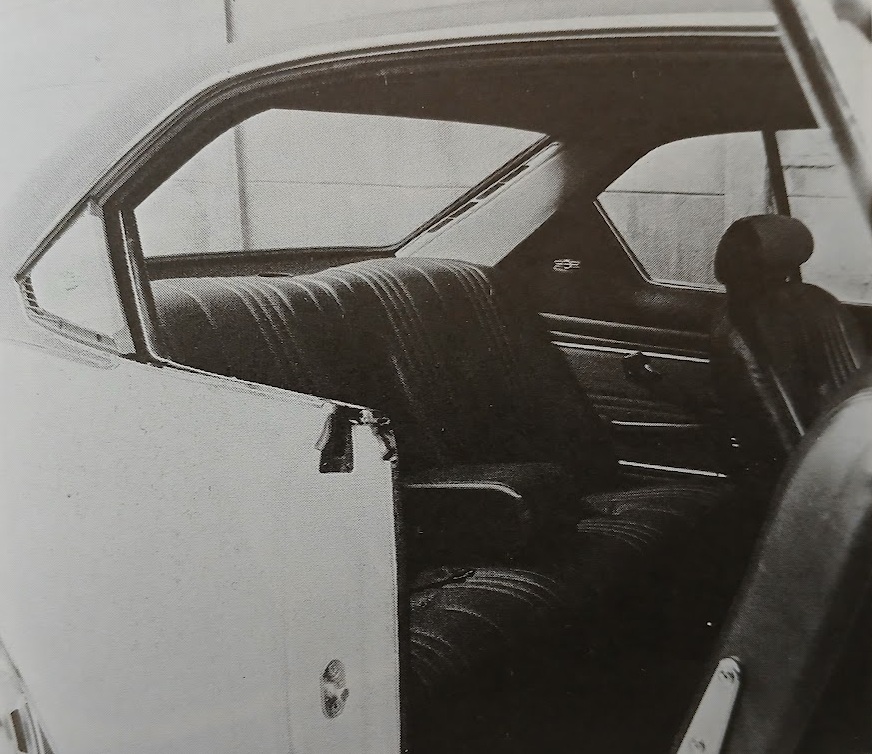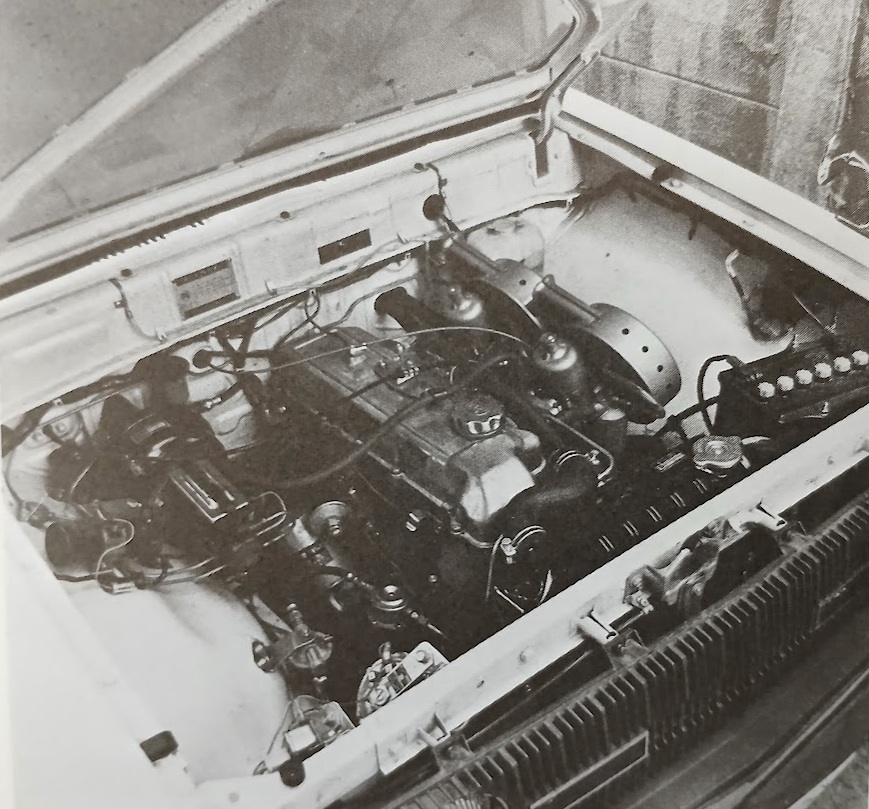Toyota Corona Mark II Hardtop 1900SL (1968)
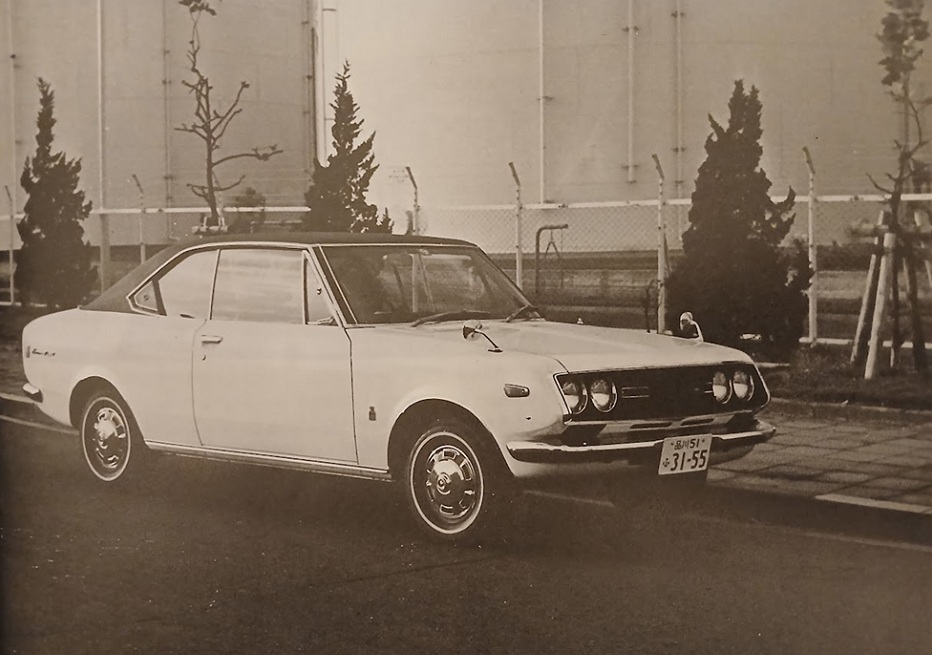
Publication: Car Graphic
Format: Road Test
Date: December 1968
Author: “C/G Test Group” (uncredited)
Summary: Stylish and practical two-door four-seater, powerful engine, excellent four-speed gearbox, extremely powerful servo disc brakes, good seats, firm but comfortable ride, excellent heating and ventilation, controls a little heavy.
Road testing the Toyota Corona Mark II 1900SL Hardtop
The C/G editorial team purchased a Hardtop 1900 SL as soon as the Corona Mark II was released, and began our customary long-term practical test. Now that we have covered 2,000km, we present our first test report.
Of the eight models and 48 possible variations of Corona II Mark II available, the one we purchased for testing was the 1900 Hardtop SL (RT72-S). This is the highest-performance model, and it costs 848,000 yen. We also think it is the best model for the price.
When buying a new car, the most fun part is thinking about which body color and option combinations to choose, but in our case, such luxuries were not allowed. As usual, we had to get the car as soon as possible, drive it day and night to run it in, take it to the Yatabe High-Speed Proving Ground for road tests, use it every day under all kinds of conditions, and write up an accurate test report by the deadline for the next issue, all on an almost relentless schedule (being an automotive journalist is not as easy as you might imagine).
Of the four body colors, our preference was Yellow Topaz, a German-style pale yellow. However, that was not among the first batch that arrived at Tokyo Toyopet, so we made do with White Moonstone, a cool white color. Moreover, as you can see in the photo, it has a trendy vinyl top (a 12,000 yen option which of course did not suit our tastes, but is the most fashionable part of the Corona hardtop, breaking up the delicate connection from the roof to the tail. We later discovered that it also has the advantage of not having to wax the wide roof).
To get straight to the point, the 1900 Hardtop SL is far superior in every aspect, including performance, ride comfort, handling, roominess, and safety, to any of the previous Corona sports models we have tested (1600GT4, 1600GT5, and 1600S). In fact, it is safe to say that this is the best passenger car that Toyota has ever produced.
The Mark II Hardtop, which can be said to have more feminine styling than the previous model, actually feels quite masculine when you drive it. Recent Toyota sports models are unexpectedly rugged-feeling, have a hard ride, and are heavy to control, and this is especially true of the Mark II. The new SOHC 1858cc engine (8R-B) has a longer stroke than the previous 1591cc (7R), and with twin SU carburetors, produces 110ps/6000rpm and 15.5kgm/4000rpm. What you notice immediately after starting to drive is that the engine feels unexpectedly powerful, and the gear ratios and distribution are ideally matched to the power and weight, making the transitions from gear to gear extremely smooth. If you push it up to 6500rpm, where the redline begins, it will easily reach 50km/h, 90km/h, and 135kmh in first, second, and third gear.
The performance of the Mark II 1900 SL is outstanding for a practical 4-5 seater with a vehicle weight of 1020kg. The 0-400m time was recorded at 17.9 seconds with a load equivalent to that of four passengers. The top speed at the Yatabe test course was 170.1km/h on the 1km straight section, and 169.0km/h on average on the 5.5km circuit course. It can reach 150km/h from a standstill in 1km, and a maximum of 170km/h within 2km. The engine rotation at that speed is only 5900rpm, 600rpm below the redline. We maintained top speed for five consecutive laps (about 10 minutes), and the water temperature and oil pressure remained completely normal, and the engine did not feel strained at all. There was no uncertainty in the car’s directional stability at top speed, and the car went as straight as an arrow just by holding the steering wheel lightly (luckily, there was only a light breeze of 2-5m/s that day). The tires on the test car were Bridgestone 6.45-13-4PR, and we started with a pressure of 2kg/cm², and after maintaining top speed for 10 minutes, the pressure had risen to 2.5kg/cm². Heat generation was very minor, but drivers who drive at high speed continuously should install the optional 165SR-13 radials.
The SOHC engine and fully synchronized 4-speed gearbox are the most attractive parts of the Mark II Corona (in contrast to the previous OHV Corona, where these were the least distinguished parts), and it revs smoothly from its 700rpm idle to the 7000rpm maximum, with almost no vibration. This engine’s strongest point is that, in addition to having a large absolute torque value, it delivers more than 90% of its maximum torque over a wide range from 2000 to 5500rpm, and because of this flexible characteristic, it can be driven in third and fourth gear half and half even in crowded city streets. The data on overtaking acceleration clearly shows the amazing flexibility of this engine. The times required to accelerate in 20km/h increments in top gear are all between 5.5 and 5.8 seconds, from the 30 to 50km/h time up to the 90 to 110km/h time.
The 1900 SL is easy to drive even in crowded towns, but it really shines on the highway. The response in top gear after exceeding 2000rpm is sharper than that of most 2-liter cars in third gear. 100km/h is achieved at about 3500rpm, which is near the maximum torque point, and if you give it full throttle from there, you can overtake a line of three buses all at once.
Our car’s engine has always maintained good performance throughout the 2,000km test, no matter what kind of treatment it was subjected to. It can be started cold in the morning with a slight pull of the choke, and can be revved hard even when first pulling away. However, it may stall during the first few stops until it really warms up. The mechanical noise of the engine is low up to high speeds, but it is a shame that the sound of the exhaust resonates inside the car around 3000-4000rpm.
The gearbox is identical to that in the Corona 1600S, with the same gear ratios. Shift feel is among the best, not only for a Toyota, but by any standard. Our car had some difficulty shifting into gear at first, but this was due to excessive clutch pedal play, and after adjustment it became much easier. The synchros are extremely powerful, and there is no crunching even during full throttle gearchanges.
The clutch is a coil spring type, just like the 1600GT. It has a relatively short stroke, so you can operate it with your heel on the floor, but it requires a lot of pressure and the engagement is a bit abrupt. Also, the throttle is stiff when first opened, so it’s not as easy to move away from a stop in the city as in, say, a Mini Cooper S, requiring quite delicate footwork. Also, rear axle tramp (the rear axle swinging out of control due to sudden drive torque) tends to occur during a racing-style start, so leaving the line quickly and smoothly required a lot of skill. It would have been nice to have a torque rod like the 1600GT.
The fuel economy is surprisingly good for a 1900cc with twin SUs. When we took it on a round trip to Nagano to break it in, the average fuel economy over the 500km drive was 10.4km/l, which is the best we have recorded so far. Even when we used it for short-distance errands in town, it rarely fell below 7km/l, and the average over the total test distance of 2,061km was 8.2km/l.
The brakes are one of the best features of the Mark II 1900 SL. They are disc/drum brakes with a servo, and the rear wheel circuit is equipped with a proportioning control valve (PCV) to prevent the rear wheels from locking up early. The brake pedal force is light, the stroke is short, and they respond gradually and very powerfully. The effect of the PCV is remarkable, and even when braking suddenly at 0.95g, the rear wheels do not lock up at all, and the car stops in a stable posture. There is exceptionally little nose dive. For the fade test, the brakes were applied 10 times in a row from 100km/h at the equivalent of 0.5g, but the brake force only increased slightly, from 20kg on the first stop to 24kg on the tenth. If a brake fluid leak occurs in either the front or the rear system, a warning light comes on and at least half the braking force is maintained. The handbrake is strong enough to make the car stall if accidentally left on when starting, but it still has an umbrella-style handle under the dash, which is difficult to reach with the three-point seatbelts fastened.
For a car with such ordinary suspension, handling is surprisingly good. The steering, with 3.5 turns lock to lock, uses a variable ratio, ranging from 19.5:1 when going straight to 21.5:1 at full lock. The free play around the straight-ahead that has long been a problem with Toyota cars is minimal in this Mark II, and the steering system’s firmness is very good. The steering effort when parking is quite heavy by today’s standards, but becomes normal once you start moving, and at high speeds the moderate weight feels rather pleasant. The ratio keeps the driver’s hands a little busy in tight corners, but the caster action is strong, and it returns to center quickly when you release your hands.
As you would expect from the 52.5%/47.5% weight distribution, understeer is a little strong, even when the car is loaded. Once you get used to turning the wheel a little bit more than anticipated when entering a corner, the response is good and even quite accurate, with very little roll. In short, the handling is very similar to that of an American sports sedan, and although it lacks the delicacy of European cars with their elaborate suspensions, many people will like this tough, simple character.
In corners on good road surfaces, the Bridgestone 6.45-13 low profile tires understeer strongly at their specified pressure of 1.6kg/cm², and they squeal easily. If you increase the pressure to 2kg/cm², the cornering power increases significantly, but in corners with uneven road surfaces, the tires tend to hop and skip and the ride comfort will be impaired. It is at times like these that you will be keenly aware of the limitations of rigid axle suspension. Also, the grip on wet roads is not very good. The tread surface of this tire is hard and they pick up cat’s eyes and other imperfections, but they are strong over railroad tracks and the so-called “wander” phenomenon rarely occurs.
The ride is quite stiff, but has a good sense of weight. The suspension settings are clearly geared towards high speeds, and it feels a little rough at low speeds, but becomes smoother as the speed increases. In particular, the car’s ability to withstand uneven washboard surfaces at high speeds is outstanding. The ride quality differs significantly between the front and rear seats. Passengers in the front seats are comfortable on almost any road surface, assisted by the thick seat cushions, but those in the rear seats are constantly moving up and down, even on paved roads. The rear headroom is adequate when the car is at rest, but when going over large bumps at high speeds, there were a few times when the rear seat passenger was bounced up and hit his head on the ceiling, so it seems that the seat support is insufficient.
The rigidity of the body is exceptional for a hardtop without a center pillar, and it blocks out road noise well.
From the outside, the Mark II appears to be a size larger than the conventional Corona. In fact, the wheelbase is 90mm longer, the overall length 170mm longer, and the overall width 55mm wider, making the external dimensions roughly the same as the Laurel. Stepping into the interior makes it feel even larger. For example, the interior width at shoulder height in the front seats has increased by 60mm compared to the previous Corona, thanks to the use of curved glass.
Good-quality seats have finally begun to appear in Japanese cars, and the Corona Mark II is a good example of this trend. C/G’s car has solid black vinyl seats (woven fabric is also available), and both the shape and dimensions are close to ideal. The seats of previous Corona sports models, especially the 1600GT, were oddly flat and the seating position tended to be too low, but this has been greatly improved. The cushions are thicker and more supportive, and combined with the backrest that wraps around the torso, lateral support has been greatly improved. The seating position has been raised slightly, greatly improving forward visibility. The seat rails are angled upwards at the front, and the entire seat is now situated comfortably. The seat is equipped with a mechanism that can lift the leading edge of the cushion by about 2cm, with the rear of the cushion acting as a fulcrum. Therefore, even very petite women can drive in a natural posture. The headrests are extremely hard, and although this is probably necessary for them to actually be effective, it’s not very comfortable to try to sleep on them with the backrest reclined. The front seats are equipped with three-point seat belts as standard, and the rear seats are equipped with two-point seat belts for two people. The front belts’ retractor springs are strong, so they fit tightly around the abdomen, and there was a strong opinion among the staff that they cannot be worn for long periods of time.
Apart from the seat height, the relative positions of the steering wheel, pedals, and shift lever are not that different from the Corona 1600S, making them generally easy to use. The shift lever, located where the hand naturally rests on it when lowered from the funnel-shaped steering wheel, has a straight lever and wide gates, unlike the 1600S, and although the spacing between the pedals is still wide and not suitable for heel-and-toeing, they are in a position and angle that allows operation with the driver’s heels on the floor.
The interior has been thoughtfully designed, with no dangerous metal protrusions. The trim is matte black, except for the woodgrain steering wheel rim, shift knob, and center console, and it is extremely luxurious and well-crafted. The instrument panel design is quite different than the previous Corona. The position of the rev counter and speedometer are reversed, and between them, the fuel, oil pressure, and water temperature are integrated into a single central gauge. The clear plastic lenses are convex to prevent reflections, and each gauge is ringed with a deep, padded visor. There are no reflections day or night, but the lighting (which can be adjusted with a rheostat) is a little too dim, and some of the switches are difficult to use because they are too focused on safety. For example, the light switch is located far back in the dash, making it a little difficult to reach from a natural position. The lever on the right of the column only switches between the low and main beam, and when stopped at an intersection, for example, it is inconvenient that you have to reach for the dash switch every time you want to blink the lights. The wipers and screen jets are controlled by a button on the left side of the column. The idea is good, but being located behind the steering wheel makes it a little difficult to operate. Ideally, it would have a control like the Mazda Cosmo and Rotary Coupe, where you can control the wipers, screen jets, indicators and lamps all with one lever. They ignition key/steering lock is also located on the column for safety. However, when the key is turned to the “on” position, the light coming through the windshield reflects off it, giving the illusion that a warning light is blinking. This can be prevented by giving the key a rubber cover or painting it matte, as Mercedes does.
The 1900 Hardtop SL comes standard with power windows, and their switches are located on the center console. Power windows are convenient once you get used to them, but they can be confusing when you are in a hurry. This is especially true when only work when the ignition key is on, as in this car. In addition, our car had three fuses blow over the course of 2,000km, causing the windows to stop working.
The biggest improvement in the interior of the Mark II is the comfort in the rear seats, where the effect of extending the wheelbase by 90mm is most noticeable. The rear seats of the old hardtop lacked legroom, making it best to think of it as a 2+2, but the Mark II is a true 4/5 seater. The cushions are deeper and the backrest is reclined at a natural angle, so two adults can sit very comfortably, and even three can sit fairly comfortably. This makes it more of a two-door sedan than a coupe. The Mark II has a high waistline due to the so-called “Coke bottle” styling, and there is a foldaway panel in the rear pillar that also serves as an air outlet, giving the rear passenger a moderate amount of privacy and a sense of security. There is a fold-down armrest in the middle of the rear seat, and the rear pillars are covered with soft padding, so parents can feel safe even if they have two mischievous children in the car, as long as they are fastened in with the standard seat belts.
The Mark II’s heating and ventilation are truly complete. The heater, which can be switched between external air or internal recirculation, is extremely powerful, and warm air is distributed evenly to the rear seats. The blower has three speeds, and on the highest setting, it blows out wind like a typhoon. The temperature control is sensitive and easy to operate. In summer, the blower works as a powerful ventilator. In addition, there are four fresh air vents on both ends of the dash, independent of the heater. Each has a knob to change the direction of the air, and they are effective at speeds of 40km/h or more. There is a dedicated defogger under the rear window, and the blower can be operated with a switch on the console. During the test period, it rained almost every day, but even with four people on board, the screen was always kept clear by turning on the front and rear defoggers. The ideal condition of warming your feet and blowing cool air on your face can also be achieved in the Mark II.
A nice touch is that everyone in the cabin has somewhere to store their luggage. The glovebox and storage compartments are quite large, and the glovebox has a light on the inside, as well as a socket for inspection lights, etc. Under the dash, there is a shelf in front of the driver and passenger’s seats that can hold a document folder. The long, narrow box in the center console, which doubles as an armrest, can hold a small camera. There is also a large pocket behind the backrest of each front seat that can hold several magazines (Car Graphic, of course). In previous Coronas, the spare tire was placed on the floor of the trunk, greatly reducing the usable space, but in the Mark II it is stored in a recess under the floor. As is typical of Toyota, there is a high-quality jack and complete set of tools. It is nice that there is even a can of touch-up paint for body repairs.
Finally, while previous Coronas had many grease points on the suspension, the Mark II requires no lubrication at all, simplifying maintenance.
Postscript: Story Photos
